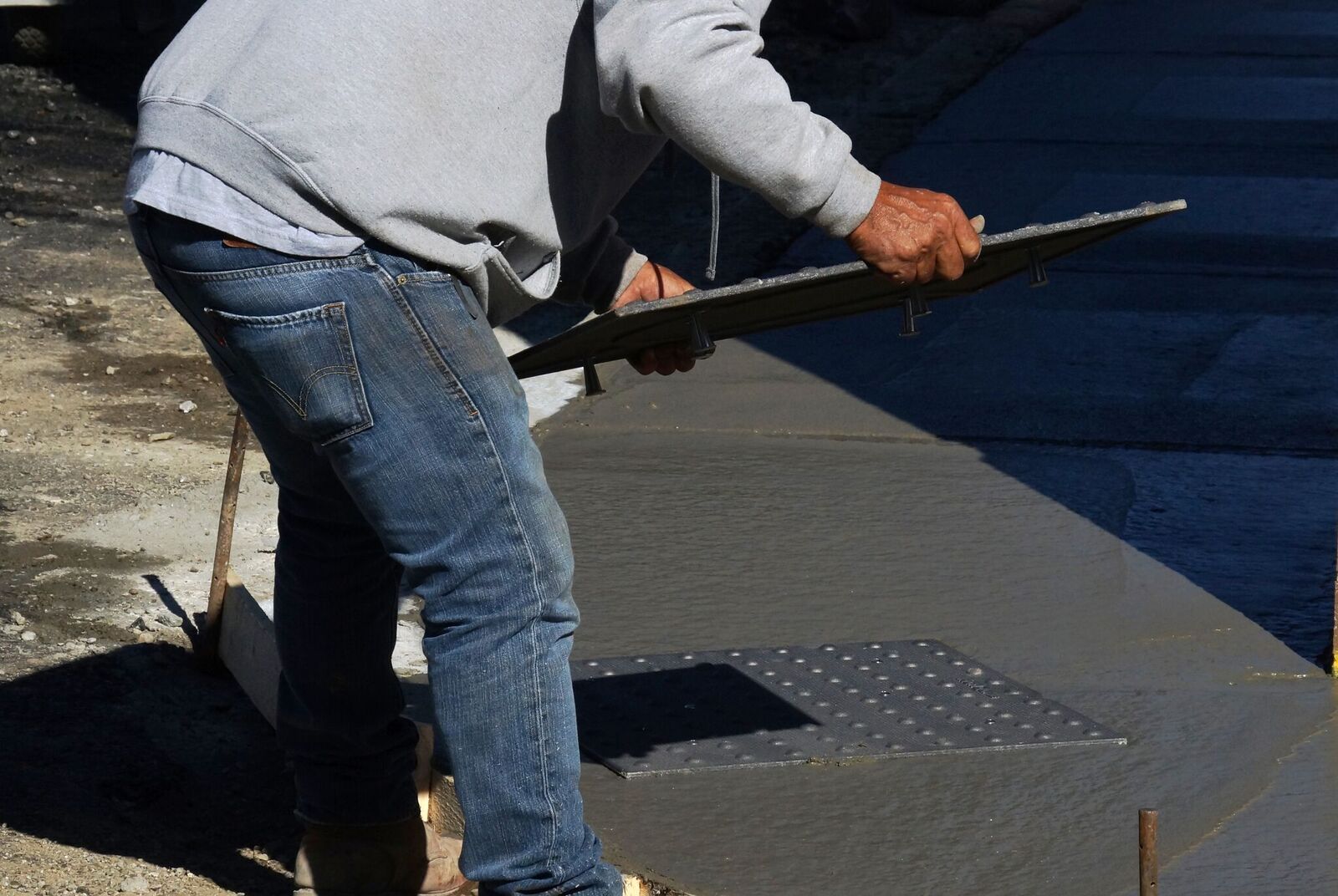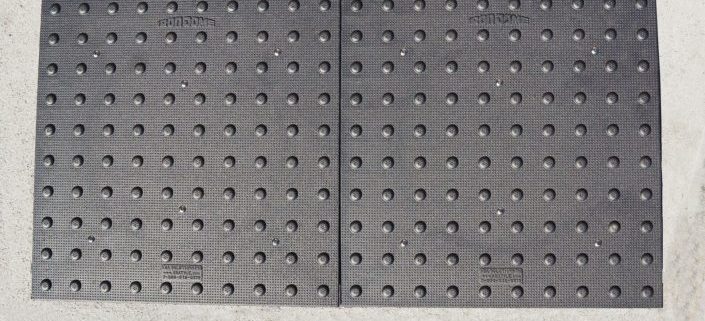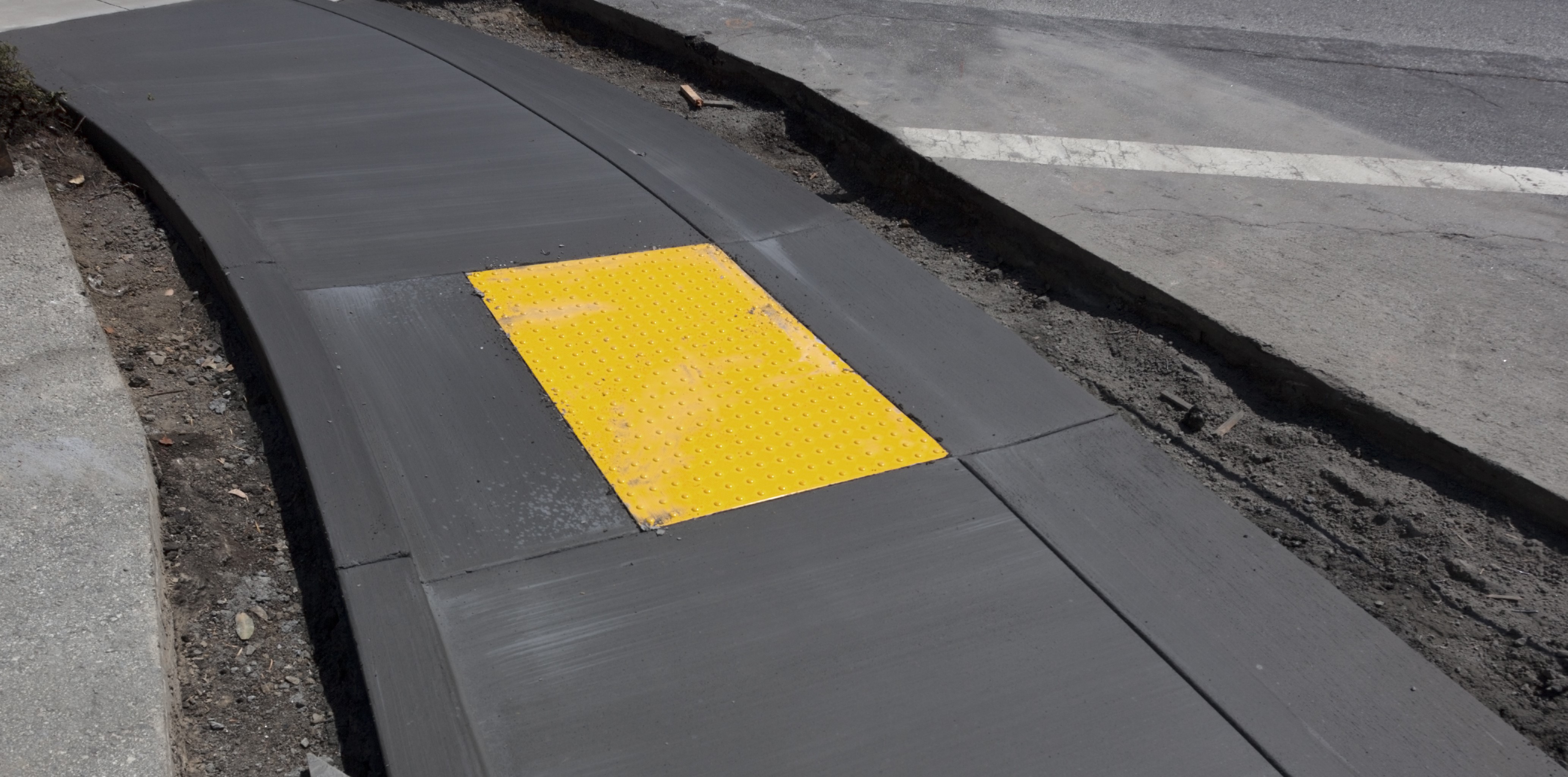When you need to install tactile warning surfaces around your business, city streets, or other locations to satisfy ADA requirements, you should consider using cast iron tactile plates. The purpose of detectable (tactile) warning surfaces is to aid those people with visual impairments and other disabilities.
The raised truncated dome is easy to detect with a cane and the feet to alert the visually impaired person that they are nearing a crosswalk, parking lot, or another area where they need to proceed with caution. Detectable warning surfaces also aid those who are in wheelchairs or use walkers. They can see the contrast to know the distance to the other side of the street or that a change in elevation like a curb ramp will be occurring in their path.
Using cast iron plate tactile warning surfaces provides several benefits over other solutions, including:
1. Cost-effective
Iron plates will last longer than the sidewalk or other locations where they are installed. As such, your investment pays off over the long term since you won’t have to worry about replacing the plates before the sidewalk needs to be replaced.
2. Durable
Cast iron is very durable, resistant to corrosion, and dent-resistant. The iron plates are also resistant to water, snow, and salt used to remove and prevent ice.
3. Resistant to Damage
Sidewalk cleaners, street cleaners, snowplows, and other such equipment will not damage the iron plates.
4. Compliant with the ADA Contract Requirement
Cast iron provides enough of a color contrast that it is well-suited for use on most types of concrete surfaces, including colored concrete.
5. Compliant with the ADA Truncated Dome Spacing Requirements
The truncated domes are aligned in a square pattern with a maximum 1.4-inch base diameter and a height of 0.2 inches. The domes are spaced approximately 2.4 inches apart with a base-to-base spacing of at least 0.65 inches.
6. Meets ADA Size Requirements
Cast iron tactile warning surface plates are available in 24-inch x 24-inch and 24-inch x 30-inch ADA-compliant sizes.
7. Can Be Painted to Meet State and Local Color Requirements
Some states, like California, have specific color requirements for tactile detectable warning surfaces. The cast iron plates can be painted the approved color to meet this requirement and repainted as needed to maintain the appearance of the color.
Where Are ADA Tactile Warning Surfaces Required?
There are specific locations where ADA tactile warning surface must be installed, including:
- Rail and Bus Station Platform Edges
- Curb Ramps
- Changes in Elevations on Public Paths of Travel
- Exterior Paths of Travel
- Handicap Ramps
- Connections Between Retail Entry/Exit Points and Parking Lots/Vehicular Ways
- Refuge Islands Greater Than Six Feet in Length
It is up to business owners, public works managers, and others responsible for public access areas to review current ADA requirements to ensure compliance to avoid costly penalties and ADA Title III lawsuits.

What Are the Penalties for Not Using ADA-Compliant Detectable Warning Surfaces?
In 2014, the Department of Justice increased the penalties for violations of the ADA, including those relating to detectable warning surfaces. As of April 28, 2014, or after, the maximum monetary penalty for a first-time violation is $75,000. For subsequent violations, the maximum monetary penalty is $150,000.
To learn more about cast iron tactile plates and other detectable warning surface solutions, please feel free to contact ADA Solutions at 1-800-372-0519 today! We can even help you review ADA requirements and any state or local requirements you must satisfy to be compliant.







